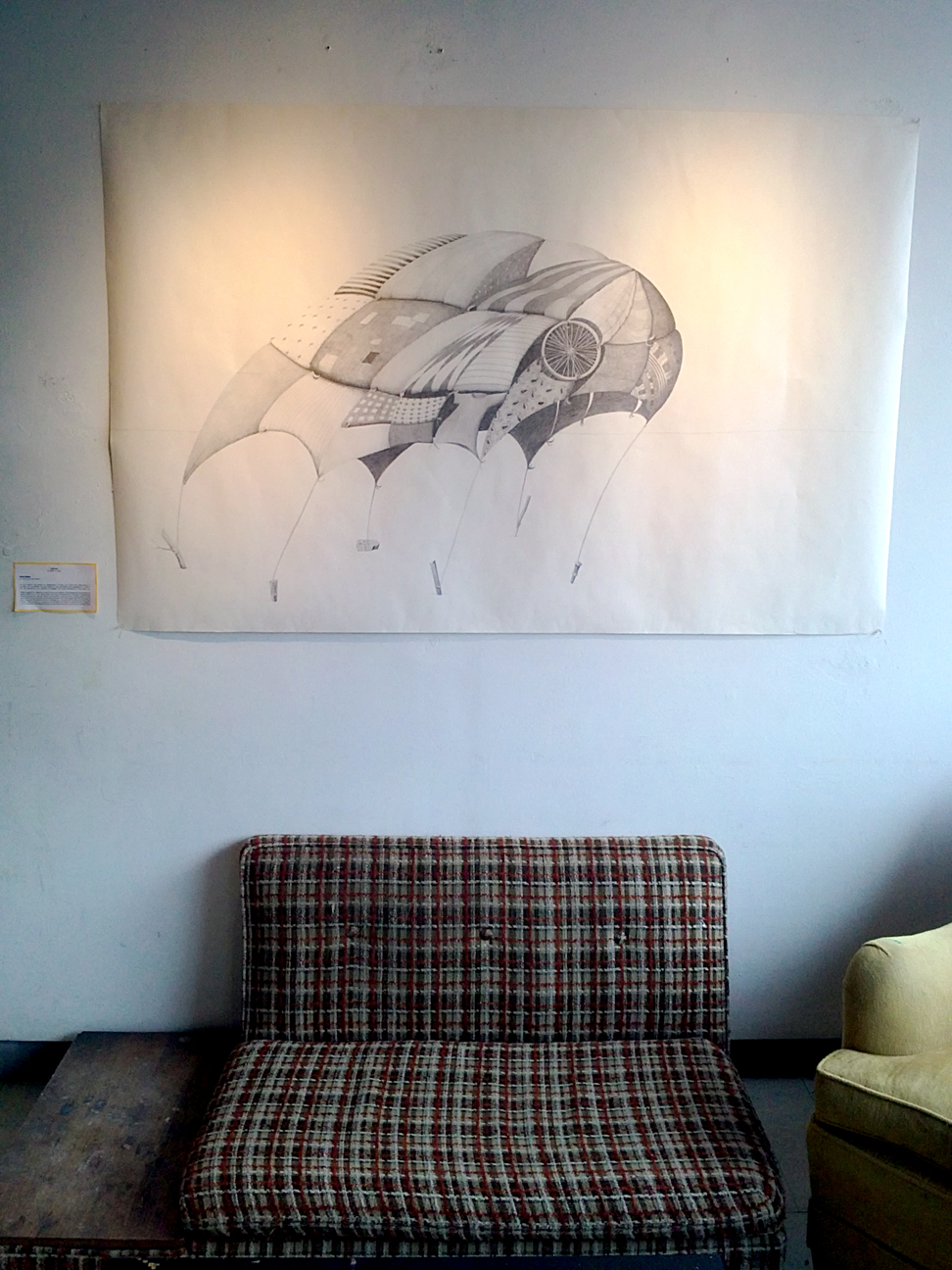Stepping into the VA building’s Café X, guests have two options: turn immediately to the left and be greeted by a glass cylinder full of food, a smiling face, and a giant chalkboard of tasty options, or turn immediately to the right and be greeted by a topless, bald, androgynous monster-human spewing paper fortunes out its mouth.
That’s right. Art in Action is still happening.
Gallery X, which inhabits the walls of Café X, is hosting the works of seven of the 30 artists who contributed to the 2012 Art in Action exhibition that ended March 4. The gallery will continue to show the pieces until March 24.
For those who can’t go—or those who just want something to read—here’s the rundown.
As mentioned above, the gallery decided to place the most shocking and unappetizing work closest to the entrance and directly next to the food. Shaw Desjean’s La Logorrhee comprises three pieces: two square canvasses, and that alarmingly ugly (in a good way) human form, which is meant to represent man’s inadequacy in expressing feelings in words.
To the left is Naomi Large’s Our Boxes, a group of brightly painted squares with vague human forms. The pieces attempt to explore “the human form in its natural state,” and the societal boxes in which its sexuality is constrained.
Turning around, visitors can take a seat on what looks like one half of a 1980s family sofa. On the way there, it’s hard to miss Karen Boyles’ Lighten, a giant graphite drawing of a kind of patchwork parachute-tent attached to strings weighed down by bricks. The description states that the structure “suggests our capacity to construct new environments. Environments that are transient, nomadic, adaptive, inclusive: created from a diversity of materials from a diversity of perspectives.”
Across from the partial couch is the second half of the gallery, located inside a turquoise painted room. Here, as before, guests have two options. Turning to the left, one can peer out the wall of windows overlooking the construction on Bishop Street. Or, looking to the right, one can ungracefully lean over someone studying in an effort to examine Keara Yim’s selection of high-colour photos that illustrate Canadians’ relationships with the land they inhabit.
Although Yim’s bright outdoor-themed photos (one two three tree) mirror the openness created by the wall of windows, the feeling of a room wide enough to walk around in is just an illusion. The room is pretty narrow. All the artwork is on the walls, but all the seating is up against the walls, too, underneath the artwork. Therefore, visitors can’t really see anything if they choose to sit down.
Him, Her, Us by Bianca Hlywa offers an examination of subtleties in gender differences through the representation of similar androgynous figures. Opium Dreams by visual artist Emily Yun Ching Claire and literary artist Ryan Kai Cheng Thom has strong messages of diaspora, queer desire and gender fluidity, and requires a lot of looking-at time.
So while the student strike may last for another week, Art in Action proves that there is certainly room for art in the Concordia fine arts landscape, no matter how many students it takes to meet quorum.
Art in Action runs at Gallery X (VA building, second floor, room 229) until March 24. For more information, visit www.gallery-x.com/current.
